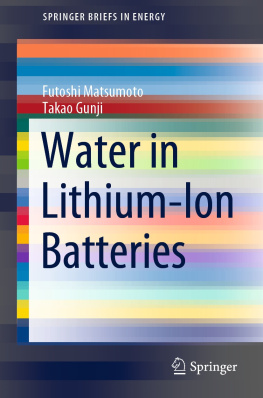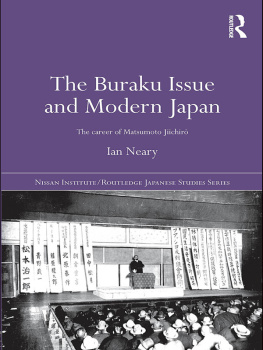
The Sociology of Structural Disaster
How and why did credible scientists, engineers, government officials, journalists, and others collectively give rise to a drastic failure to control the threat to the population of the Fukushima disaster? Why was there no effort on the part of inter-organizational networks, well-coordinated in the nuclear village, to prevent the risks from turning into a disaster?
This book answers these questions by formulating the concept of structural disaster afresh. First, the book presents the path-dependent development of structural disaster through a sociological reformulation of path-dependent mechanisms not only in the context of nuclear energy but also in the context of renewable energy. Second, it traces the origins of structural disaster to a secret accident involving standardized military technology immediately before World War II, and opportunistic utilization of the Great Kanto Earthquake of 1923, thus reconstructing the development of structural disaster within a long-term historical perspective. Maintaining distance from conflicts of interest and cultural essentialisms, this book highlights configurations and mechanisms of structural disasters that are far more persistent, more universal, but less visible, and that have turned risk into suffering. The book seeks to cast light on an important new horizon of the science-technology-society interface in the sociology of science and technology, science and technology studies, the sociology of disaster, the social history of the military-industrial-university complex, and beyond.
Miwao Matsumoto is a Professor Emeritus of Sociology at the University of Tokyo, Japan.
Routledge Studies in Science, Technology and Society
33 The Ethics of Ordinary Technology
Michel Puech
34 Imagined Futures in Science, Technology and Society
Edited by Gert Verschraegen, Frdric Vandermoere, Luc Braeckmans and-Barbara Segaert
35 Adolescents and Their Social Media Narratives
A Digital Coming of Age
Jill Walsh
36 Scientific Imperialism
Another Facet of Interdisciplinarity
Edited by Uskali Mki, Adrian Walsh and Manuela Fernndez Pinto
37 Future Courses of Human Societies
Critical Reflections from the Natural and Social Sciences
Edited by Klber Ghimire
38 Science, Africa and Europe
Processing Information and Creating Knowledge
Edited by Patrick Harries, Martin Lengwiler and Nigel Penn
39 The Sociology of Structural Disaster
Beyond Fukushima
Miwao Matsumoto
40 The Cultural Authority of Science
Comparing across Europe, Asia, Africa and the Americas
Edited by Bauer, MW, Pansegrau, P and Shukla, R
For the full list of books in the series: www.routledge.com/Routledge-Studies-in-Science-Technology-and-Society/book-series/SE0054
First published 2021
by Routledge
2 Park Square, Milton Park, Abingdon, Oxon OX14 4RN
and by Routledge
711 Third Avenue, New York, NY 10017
Routledge is an imprint of the Taylor & Francis Group, an informa business
2021 Miwao Matsumoto
The right of Miwao Matsumoto to be identified as authors of this work has been asserted by him in accordance with sections 77 and 78 of the Copyright, Designs and Patents Act 1988.
All rights reserved. No part of this book may be reprinted or reproduced or utilised in any form or by any electronic, mechanical, or other means, now known or hereafter invented, including photocopying and recording, or in any information storage or retrieval system, without permission in writing from the publishers.
Trademark notice: Product or corporate names may be trademarks or registered trademarks, and are used only for identification and explanation without intent to infringe.
British Library Cataloguing-in-Publication Data
A catalogue record for this book is available from the British Library
Library of Congress Cataloging-in-Publication Data
A catalog record for this book has been requested
ISBN: 978-1-138-23034-7 (hbk)
ISBN: 978-1-315-38618-8 (ebk)
Typeset in Galliard
by Apex CoVantage, LLC
Contents
2 The theory of structural disaster: sector model and sociological path-dependency in the science-technology-society interface
Intermingling of epistemological and ontological dimensions: the first step toward a sector model based on the foundation of the sociology of science and technology
Basic terminologies to specify aspects of science, technology, and society: the second step to sector model
Snapshot of what the sector model can reveal: a view through types of actors
Sociological path-dependency as a dynamic theory of structural disaster
Following a precedent leads to non-rationality
Integration of static and dynamic frameworks: why has structural disaster been neglected for so long?
3 Institutionalized inaction by compliance: from the Great Kanto Earthquake to the nuclear village
Dual organizational structure of the governmental investigation committee
Quick fixes for problems at hand and lack of structural reform
Big subsidy in expectation of something unusual
After the Great Kanto Earthquake: a national research institute that works by inertia
Advanced defense nation versus high economic growth nation: recurring structural disaster
How nuclear power bills are drafted
The academic sector and institutionalized inaction: what comes at the end of long-standing structural disaster?
How to discern the credibility of expertise in the science-technology-society interface
4 Secrecy throughout war and peace: structural disaster long before Fukushima
Structural similarities between the Fukushima accident and little-known pre-war accident: from the perspective of structural disaster
Development trajectory of the Kanpon type and its pitfalls
The serious accident undisclosed: institutionalized secrecy during the wartime mobilization of science and technology
The hidden accident and outbreak of war with the United States and Britain: deciphering institutionalized secrecy
Sociological implications for the Fukushima accident: beyond dichotomous understanding of success or failure
SPEEDI revisited: from the perspective of structural integration and functional disintegration
Structural disaster across pre-war/military and post-war/non-military regimes
5 A structural disaster in environmentally friendly oceanic energy development: the hidden link between renewable energy and stratospheric ozone depletion
Social background of new energy technology development in Japan: the origin of the Sunshine project
Ocean energy development and global environmental assessment: the complex case of ocean thermal energy conversion (OTEC)
Subtler aspects of the complex relationship between OTEC and the global environment: an unexpected path revealing structural disaster
Feedback-for-learning channels inactivated
Reversible technological development and irreversible environmental change: decision-making process exhibiting structural disaster
Structural disaster, the precautionary principle, and mild freezing
6 Structural disaster and the wind power regime: myth creation, myth destruction, and relevant outsiders









